
Preparing Hops trellises
- Alycia

- Apr 11, 2023
- 4 min read
Updated: Jul 1, 2023
I get so many questions on how we plant hops that I thought I would share the process. It was so exciting planting our hops on the farm and watching them grow! We actually tried a couple different methods to figure out what's going to work the best for us. We have full sun & some harsh winds in our little microclimate here on the farm.
A little background on hops, hops are a plant that grows from a rhizome.

The bines are the production part that is trained up a string that can grow upwards of 20ft in a season. From the bines the hops flowers grow also called hop cones. These cones are what's harvested and used to make beer, tea, soap, and sleep pillows. Hops are a perennial, so they come back every year for about 25-30 years. New hops plants can be made from clippings of the established hops rhizomes allowing you to continue propagating new plants to replace the older plants. You can also take clippings of the shoots that come up that you don't train and create clones of the plant from them. The shoots can also be cooked similar to young bamboo shoots, read about it here. Since hops are a perennial, they are a long term no till standing crop that will outlive the poles which typically need to be replaced every 15-20 years.
Before finding the farm, we lived somewhere that had height restrictions so we couldn't have 20ft poles. We still wanted to experiment with growing while we looked for the right property, which is when Russ came up with an amazing plan. He developed a horizontal growing trellis!
The plan was to have the hops grow up 8ft & then horizontal another 8ft. (1st year baby hops don't always make it all 20ft) The hops were started in the house then moved to a cold frame to harden off before being transplanted to the trellis. Everything started out great & with lush, gorgeous foliage, then the moment of truth came.... the hops finally reached the first 8ft & it was time to start going horizontal. We were so nervous but determined! The thing we learned here was that hops naturally wanted to grow vertically lol. To get them to go horizontal we had to train them daily for about one foot before they started to figure it out. They would still randomly try to go vertically when they got a growth spurt after a few good solid days of sunshine. Overall, the process worked pretty well, and we got a decent number of hops off the baby hops.
The next method we tried was an Ibex system that features posts that fold down brining the tops of the bines down to an easy to reach level. This allows you to cut the bines from the ground, so no one has to climb ladders. It is also fiberglass posts instead of wood, so they last longer. This worked out great for our 1st year hops since they are lighter & only producing about 10% of full production. The challenge was our 2nd year hops....in the second year the hops is at about 50% of full production making it a much heavier plant. This caused the bines to weigh down the system threatening to make it collapse. Russ, Randy and Rick all worked on trying to find a solution to keep it up right. Ultimately, they had to use some scrap wood as a temporary pole in the middle of the line. Since this pole was on top of the ground & wasn't sunk into the ground, we had to use other hardware to anchor it in. It took several different tries due to weight, and wind to get a working model that would get us through to harvest. In the end we determined that this system just isn't sturdy enough for long term use. It will be repurposed for propagation of new baby hops that will get transplanted after the 1st year.
We also maintain a small area for experimental hops, where we test out new hops varieties to see how well they will do in our area. To help give them the best shot we set them up on the side of the shop so that the shop could help shield them a little bit. This last year we also got some Saaz transplants from our neighbor that we had to quickly get set up on a hop teepee.
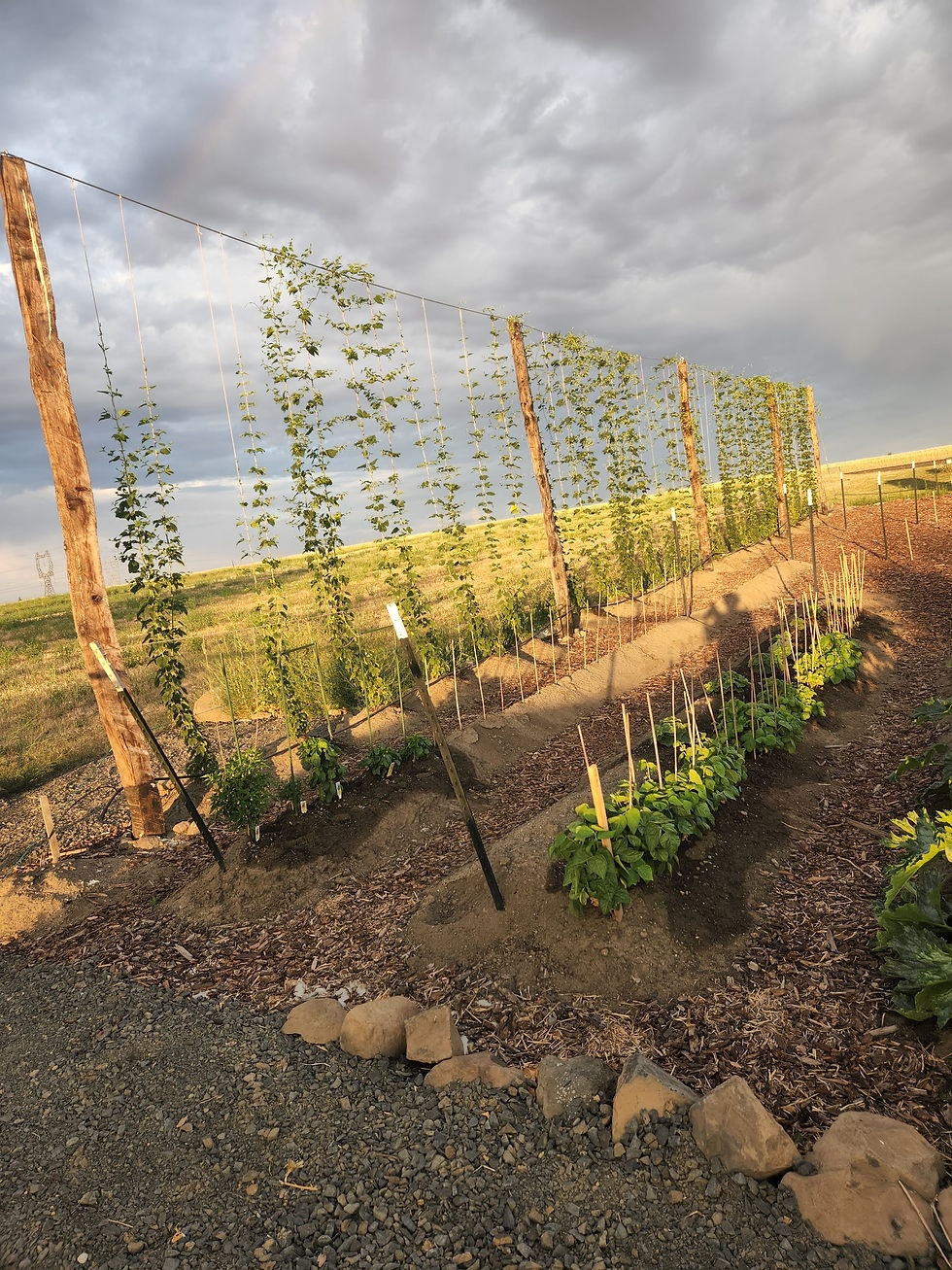
Once the farm was ready to start expanding, we decided to go with the traditional pole and cable wire trellis system. For those who aren't familiar, Spokane has a lot of different microclimates, and our farm is no exception! We get strong winds and full sun here; we also have a ravine with creek out back that suck in that cold air (it really helps when we get a random early or late frost). To help combat the strong winds we added additional wire guides to keep the bines from getting to beat up from the wind. We also had to add in some water retention and conservation methods due to the wind, more to come on that later!
When it came time to get the first new row installed, we ran into a supply issue with the poles. None of the lumber yards near us were producing the size poles we needed so we had to make our own! Check out more info on that process here.
This year we are working on expanding a half-acre hops yard, a huge thank you to our infrastructure suppliers; poles from Parma Post & Pole, coconut Coir & hops clips from Growers Supply, steel cable from E-Rigging and Sheldon Hill for the lag screws and other small parts. Check out our Instagram @OdinsReward for the latest updates on the expansion!


























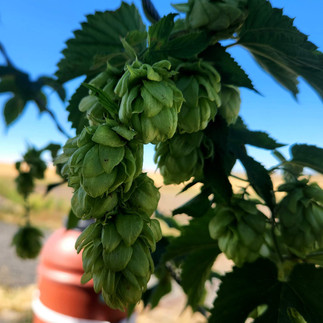





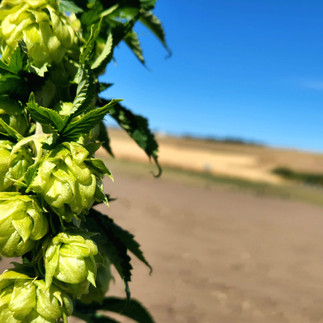



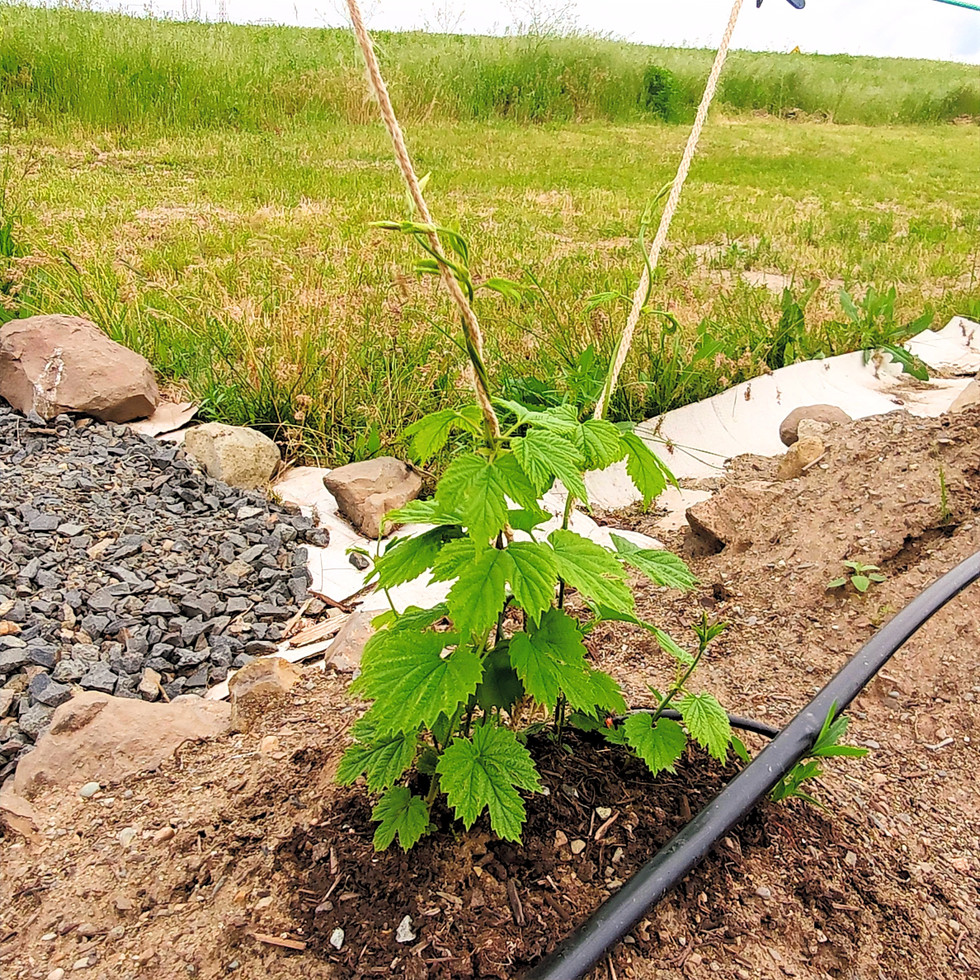



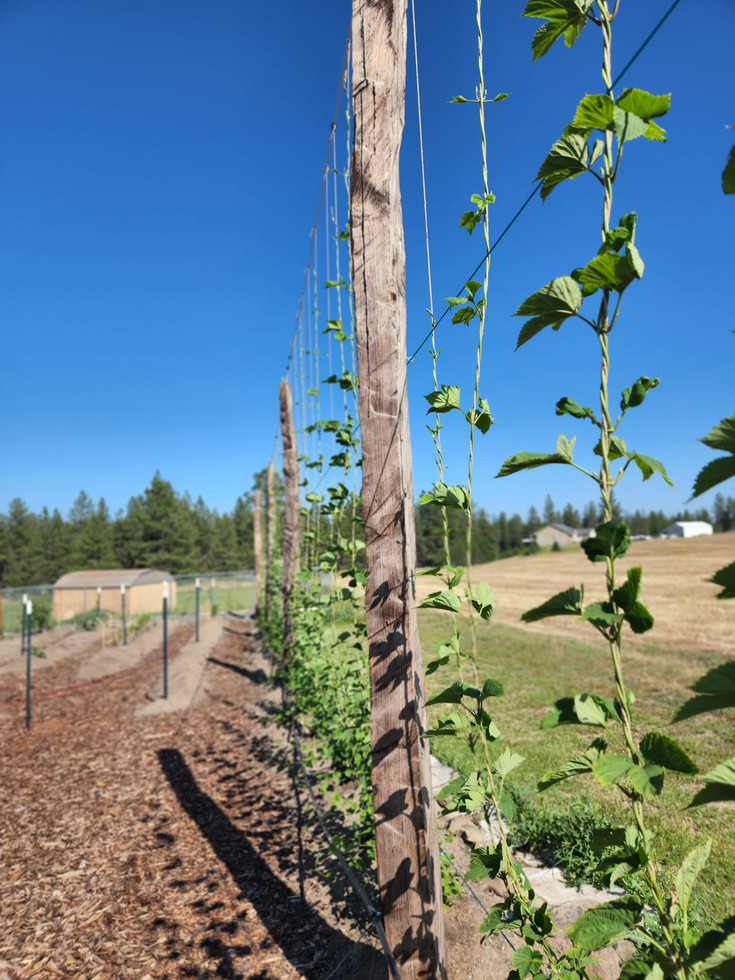


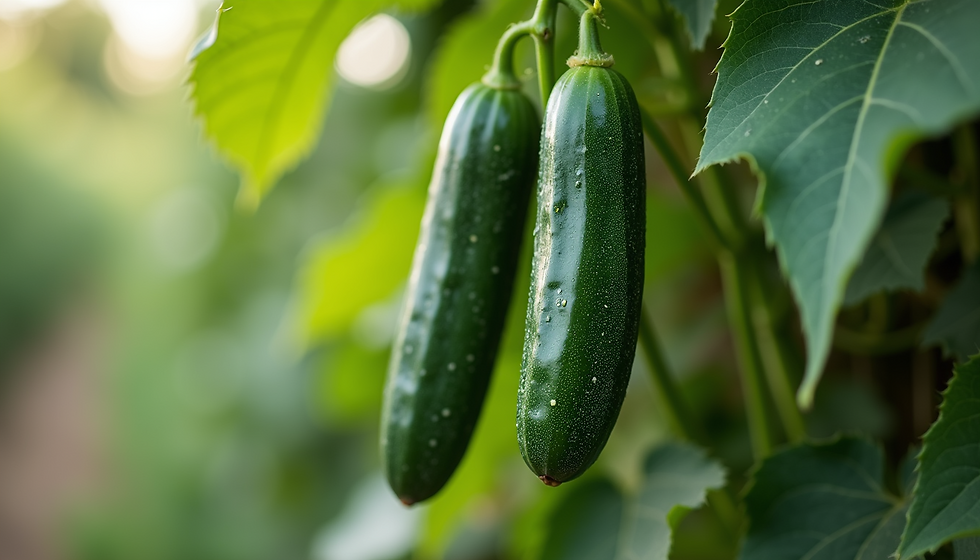


Comments